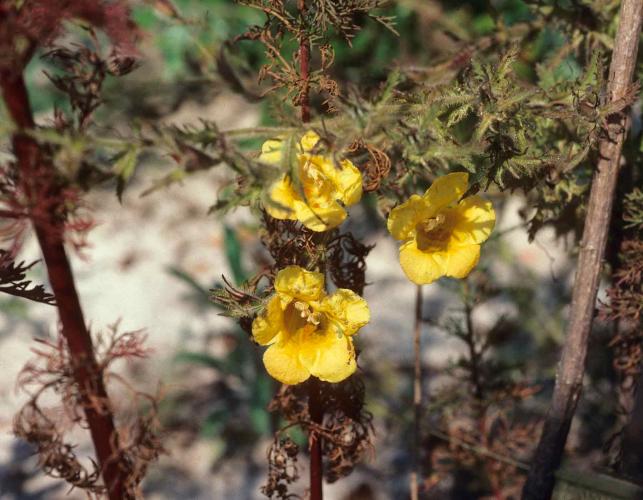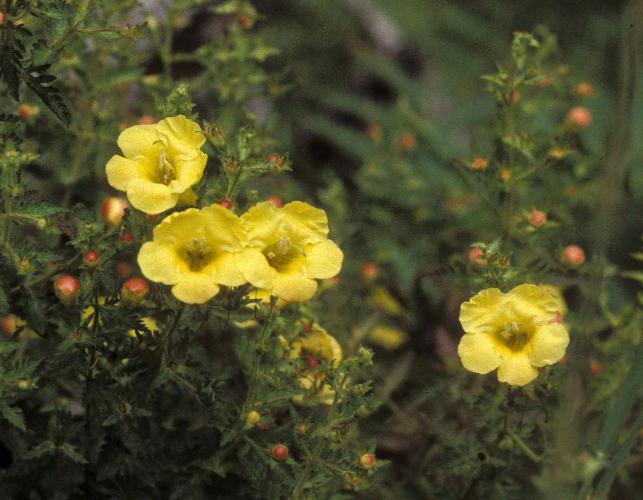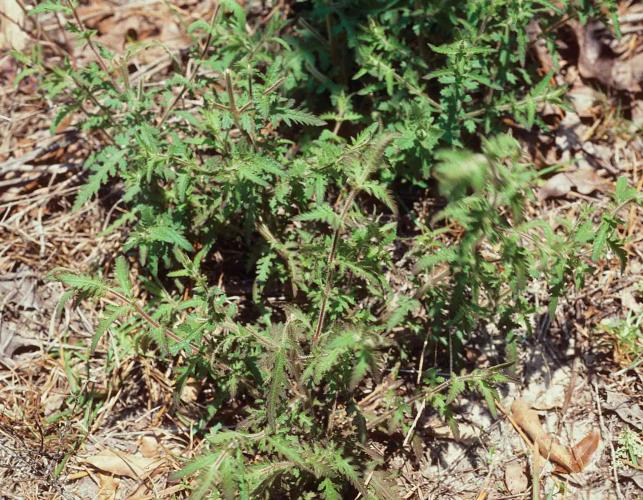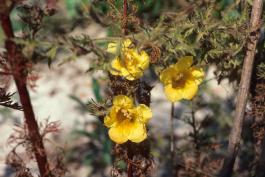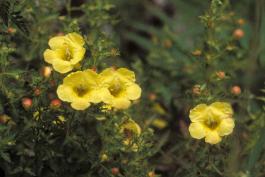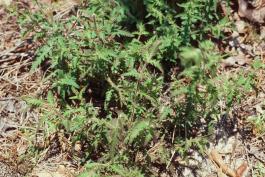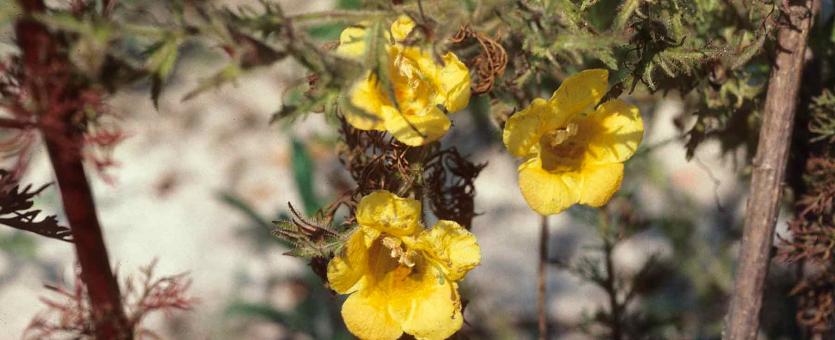
A densely hairy, much-branching annual. Flowers on glandular-hairy stalks arising from upper leaf axils, long tubes with 5 lobes, light yellow, to 3 inches long, similar to the flowers of foxglove. Blooms August–September. Leaves opposite, pinnately divided into fernlike leaflets or small lobes.
Similar species: There are 3 species of Aureolaria in Missouri. The others are perennial and lack the delicately dissected leaves of this species. Smooth false foxglove (A. flava) is mostly in southeast Missouri; it lacks hairs. Big-flowered gerardia (A. grandiflora) is most commonly encountered and is scattered across the state, but apparently uncommon in northwest and southeast sections; it is densely short-hairy (and not glandular-hairy).
Height: to 3 feet.
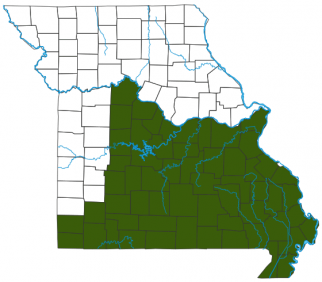
Scattered in the Ozarks.
Habitat and Conservation
Occurs in upland forests, savannas, glades, tops of bluffs, and banks of streams. Look for it in dry, open woods and on glades, in acid soils.
Human Connections
Missouri has about 2,005 native plant species and 765 introduced ones. Adding hybrids and subspecies, the grand total is about 3,200. That’s a lot of plants! Because plants are so important to human survival (and to all life on earth), botanists are continually busy increasing our knowledge.
Ecosystem Connections
Like many other members of the broomrape family, false foxgloves derive some of their nutrients by connecting their roots to those of nearby plants, commonly oaks, and parasitizing them. Bumblebees pollinate the flowers. Baltimore checkerspots use false foxglove species as larval host plants.
